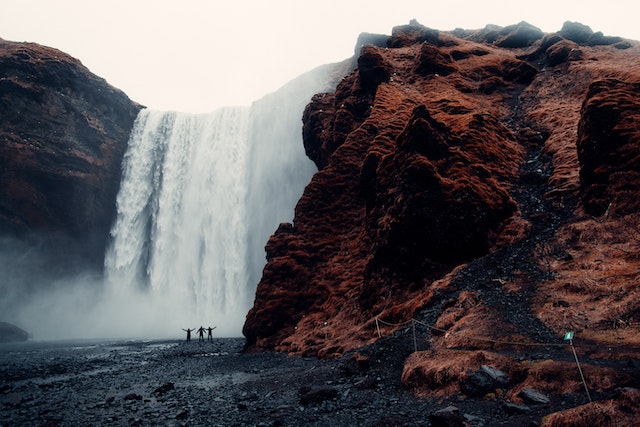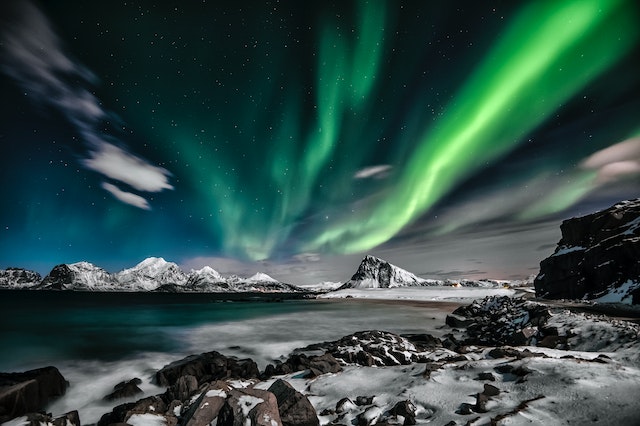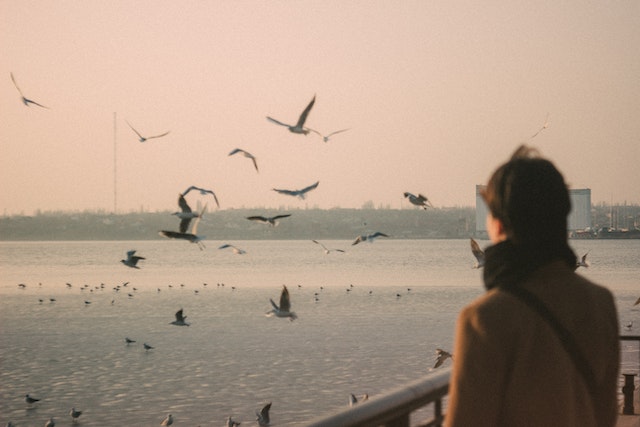4 Marvels of the Icelandic Landscape
The ethereal beauty of the Icelandic landscape has captivated the hearts of travellers worldwide, and it’s no surprise that Canadians are drawn to this Nordic wonderland year after year. From majestic waterfalls to natural Icelandic hot springs and native Icelandic birds, this country offers a kaleidoscope of natural wonders that leave visitors in awe.
In today’s blog, we will embark on a journey through 4 marvels of the Icelandic landscape and discover the magic that awaits visitors and ex-pats alike.
Table of Contents
→Sign Up Now: Free Trial Icelandic Lesson With a Native Teacher!←
1. Icelandic Waterfalls: Breathtaking Beauty
Gullfoss: The Thundering Cascade
Located in the southwest, Gullfoss mesmerises visitors with its thunderous rush of water plunging into the rugged Hvítárgljúfur canyon. These iconic Icelandic waterfalls showcase the sheer power and raw beauty of nature, leaving visitors feeling humbled and inspired.
Seljalandsfoss: Behind the Veil of Water
Situated along the South Coast, Seljalandsfoss allows visitors to walk behind the cascading veil of water for a truly immersive experience. The curtain of water, surrounded by stunning scenery, creates a magical environment, making it a highlight of the Icelandic landscape.
Skógafoss: Majestic and Misty
Also located in the south, Skógafoss presents a magnificent sight with its 60-meter drop and shimmering mist. The sheer power and elegance of this waterfall, coupled with the rainbows that often grace its base, make it an unforgettable spectacle.

Image via Pexels
2. Icelandic Hot Springs: Natural Relaxation
The Blue Lagoon: An Ethereal Oasis
Situated in a lava field on the Reykjanes Peninsula, the Blue Lagoon offers a surreal experience. Are you looking for a relaxing time? Soaking in the warm, mineral-rich waters amidst volcanic rocks while surrounded by the cool Icelandic air is both rejuvenating and otherworldly.
The Secret Lagoon: Rustic Serenity
Nestled in the Golden Circle region, the Secret Lagoon offers a more rustic experience. With steam rising from bubbling Icelandic hot springs, visitors can unwind in warm waters surrounded by untouched nature — a tranquil and authentic Icelandic experience.
Reykjadalur: The Hot River Hike
Located in the Hveragerði area, Reykjadalur invites adventurers on a picturesque hike through a scenic valley. The reward at the end of the trail is a natural hot river where visitors can bask in the warm embrace of nature. This amazing place will allow you to relish in the harmony between geothermal energy and a striking Icelandic landscape.
3. Icelandic Northern Lights: How and Where to See Them
The Northern Lights, or Aurora Borealis, are a celestial light show that graces Iceland’s dark winter skies. These dancing ribbons of green, pink, and purple create a magical display that has attracted generations of tourists and never gets old.
Here are three spots where you can experience the phenomenal Icelandic Northern Lights:
Lake Mývatn
This area offers wide-open views and minimal light pollution, making it one of the best places to view the Northern Lights. The best time to view them is between mid-September and mid-April.
Kirkjufell
In the Snæfellsnes Peninsula, Kirkjufell is a mountain shaped like a perfect pyramid. This location boasts breathtaking views of the Northern Lights against a rugged Icelandic backdrop. For a great viewing experience, visit between late September and early April.
Þingvellir National Park
This is a park surrounding the oldest parliament in the world,Thingvellir (‘Valley of the Gathering’), and its unique landscape makes it an ideal spot to view the Northern Lights. Best times to visit are from late August until mid-April.

Image via Pexels
4. Icelandic Birds: Why Iceland is the Best Place for Bird Watchers
Puffins: Charming Coastal Dwellers
Along the cliffs of the Westman Islands, the Dyrhólaey promontory, and the Látrabjarg cliffs, visitors can witness the adorable puffins. With their colourful beaks and human-friendly behaviour, these coastal Icelandic birds captivate nature lovers and photographers alike.
White-Tailed Eagle: The Majestic Raptor
The remote Westfjords region is home to the white-tailed eagle, Iceland’s largest bird of prey. Observing these majestic raptors soaring through the pristine Icelandic skies is a treat for bird enthusiasts seeking rare and awe-inspiring sightings.
Red-Throated Diver: Haunting Calls by the Lakes
Iceland’s numerous lakes reverberate with the haunting call of the red-throated diver. These elusive Icelandic birds can be spotted in various locations, providing birdwatchers with an opportunity to appreciate its grace and beauty against Iceland’s breathtaking aquatic landscapes.
The Icelandic landscape is a testament to the Earth’s natural wonders, captivating the hearts and minds of visitors. Whether you want to marvel at the power of Icelandic waterfalls, relieve stress in a steamy hot spring or admire exotic bird species, the Icelandic landscape offers an unforgettable journey through some of the world’s most breathtaking natural wonders.

Image via Pexels
So, have you already booked your flight? That’s awesome! But, before you pack your suitcase, make sure you check our FAQs section:
Beyond the Icelandic Landscape: FAQs about Iceland
1. What is the Icelandic currency?
The Icelandic currency is the Icelandic Krona (ISK). The name króna (which means crown) comes from the Latin word corona. The name “Icelandic crown” is sometimes used to refer to the Icelandic currency. This is especially common in the financial markets.
2. What is the best time to visit Iceland?
The best time to visit Iceland depends on your preference, with each season offering something different. Summer offers long days and cool nights, while winter brings the Northern Lights and a white landscape.
3. What is the Icelandic flag like?
The Icelandic flag features a white-red background with a blue and white Nordic cross. The red is meant to represent the nation’s courage and strength, while the blue stands for its freedom and justice. The cross symbolises Iceland’s link to Christianity.
4. Is Iceland very cold?
Despite its location, Iceland has a surprisingly temperate climate. It is warmer than expected due to the Gulf Stream, with summer temperatures ranging between 10°C and 15°C (50°F and 59°F). In winter, temperatures drop slightly to 0°C and 5°C (32°F and 41°F).
5. What language is spoken in Iceland?
Icelandic is the official language of the country. English and Danish are also widely spoken, with most Icelanders being fluent in these languages.
Learn Icelandic Now
Would you like to speak the local language while you visit Iceland? At Language Trainers, we offer customized Icelandic courses tailored to your needs and schedule.
Whether you want to take an in-person course at your home or prefer to do online sessions during your lunch break, Language Trainers will provide you with the perfect learning package.
→Sign Up Now: Free Trial Icelandic Lesson With a Native Teacher!←
All you have to do is send us a quick message telling us about your preferences and learning goals, and we’ll design the perfect course for you.
So what are you waiting for? Start learning Icelandic with us now and experience the magical beauty of Iceland in its unique language!
